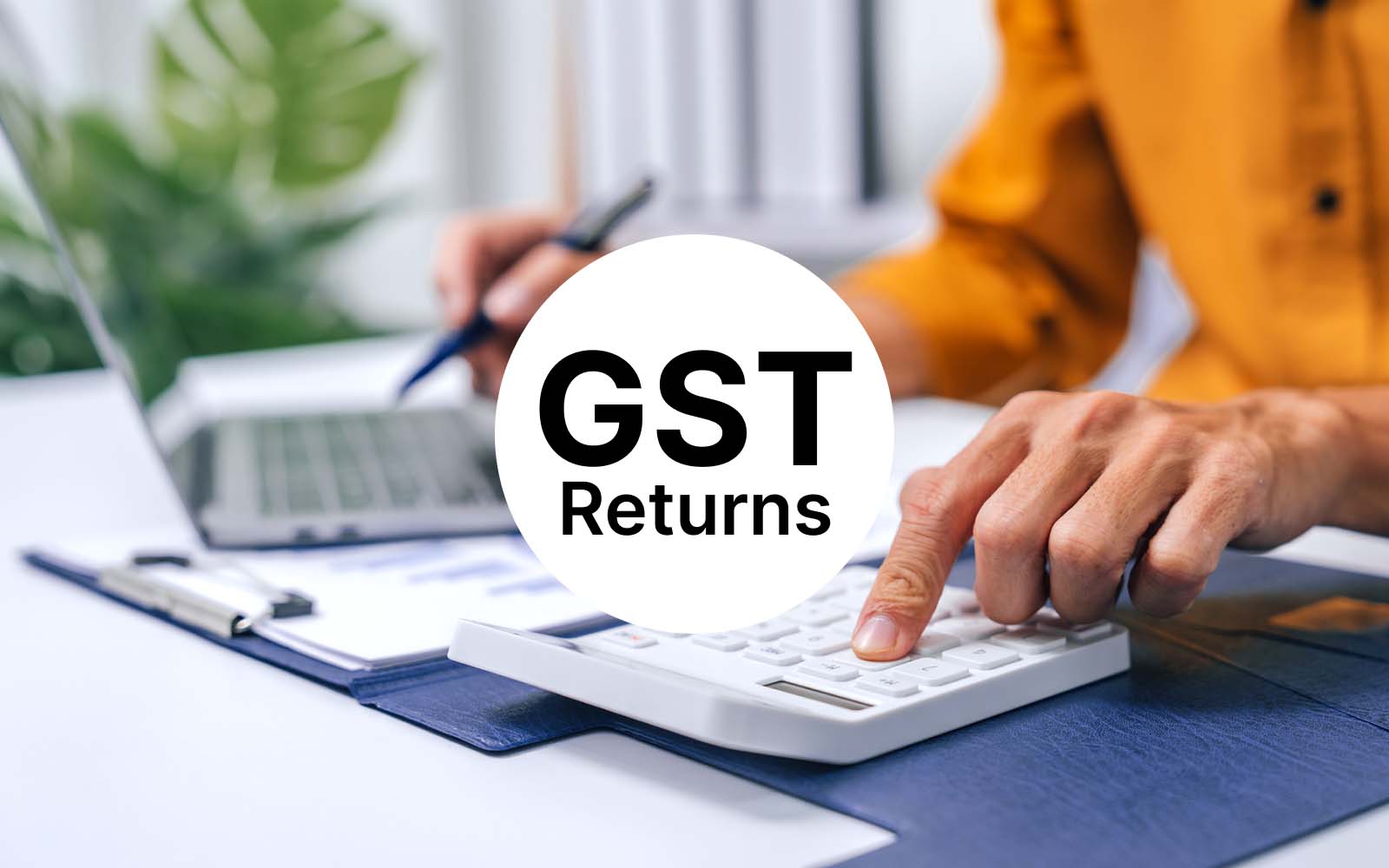
You must file tax returns periodically if you are a business owner registered under the Goods and Services Tax (GST) framework. While filing GST returns might seem simple at first glance, it is important to exercise caution. This is because even a small oversight, error or mistake in your returns can have significant consequences that range from notices and penalties to loss of input tax credit (ITC).
However, you can ensure that your tax returns are accurate and timely by understanding the most common GST filing errors that most taxpayers make.
Contents
- 1 Most Common GST Filing Errors in 2025 and How to Avoid Them
- 1.1 1. Incorrect or Mismatched Invoice Details
- 1.2 2. Wrong Input Tax Credit Claims
- 1.3 3. Missing Filing Deadlines
- 1.4 4. Incorrect Classification of Goods and Services
- 1.5 5. Filing Returns Without Reconciliation
- 1.6 6. Ignoring the Various Amendments and Corrections
- 1.7 7. Overlooking the Reverse Charge Mechanism
- 1.8 8. Skipping Nil Return Filing
- 2 Conclusion
Most Common GST Filing Errors in 2025 and How to Avoid Them
Whether you are a business owner, an accountant or a self-employed individual, knowing the various GST filing errors and how to avoid them is essential for staying compliant with the various provisions of the indirect taxation framework.
1. Incorrect or Mismatched Invoice Details
The invoices you receive and issue are the backbone of your GST returns. They play a critical role in determining your tax liability and input tax credit. If the details in the invoices you issue and receive are wrong or do not match with each other, you may end up filing erroneous returns. This is one of the common GST filing errors that most taxpayers make.
When filing returns, you must ensure that the GSTIN, invoice number, invoice date, taxable value and tax amount are entered correctly. A mismatch between your GSTR-1 and GSTR-3B returns can result in delayed credit or tax notices. With the GST compliance systems becoming stricter in 2025, making such GST return mistakes can have significant consequences.
2. Wrong Input Tax Credit Claims
Claiming input tax credit accurately is crucial for reducing your tax liability. However, mistakes in ITC claims continue to be among the most common GST filing errors even in 2025. Claiming more input tax credit than you are eligible for can lead to notices or penalties, whereas claiming less input tax credit will result in higher tax liability.
To avoid wrong input tax credit claims, you must verify each entry against its respective GST invoice before including it in your returns. Furthermore, it is also important to avoid claiming ITC on goods and services that do not appear in GSTR-2B. If you do claim them, it can lead to a reversal of credit with interest and penalties.
3. Missing Filing Deadlines
As a registered taxpayer under the GST framework, you must always file your returns within the stipulated due date. Missing your return filing deadline is one of the most frequent GST return mistakes and can have serious consequences, like interest and penalties. The GST portal automatically restricts certain activities, like your ability to generate e-way bills, if the returns are not filed on time.
With the due dates being different for returns like GSTR-1, GSTR-3B and GSTR-9, you might find it difficult to keep track of them. To help you file your returns on time and avoid missing the deadlines, consider using a compliance calendar or automated reminders.
4. Incorrect Classification of Goods and Services
The Goods and Services Tax framework uses the Harmonised System of Nomenclature (HSN) and Services Accounting Code (SAC) to identify goods and services, respectively. Assigning the wrong HSN or SAC is among the most prevalent GST filing errors. Such incorrect classification of goods and services can lead to wrong tax rates being applied, which can impact your tax calculations.
As a taxpayer, you must ensure that each product or service is assigned the right HSN and SAC as notified by the authorities. When assigning the codes, accuracy is essential since even a minor change in the description can sometimes alter the applicable GST rate. Furthermore, you must ensure that this classification is consistent across your invoices and accounting systems to avoid GST return mistakes in the future.
5. Filing Returns Without Reconciliation
Reconciling accounting records with the GST portal is a crucial step that many taxpayers skip. However, doing so can often result in GST filing errors, leading to notices from the authorities. As a taxpayer, you must do reconciliations every month to ensure your accounting data matches what is reported on the GST portal.
When reconciling data, focus on sales, purchases and ITC on both your accounting software and the GST portal. If you find any discrepancy, get it rectified before you file your GST returns. Making reconciliation a part of your filing routine can help you reduce common GST filing errors and improve your compliance record.
6. Ignoring the Various Amendments and Corrections
Sometimes, you may discover errors in your returns after you submit them. In such cases, you must file an amendment in subsequent returns to rectify the mistakes. Failing to file amendments within the limited timeframe as allowed by the law is one of the common GST filing errors you should strive to avoid.
GST returns like GSTR-1 and GSTR-3B have amendment fields that allow you to correct errors in invoice details, tax amounts and missing transactions. Missing the amendment window makes the errors permanent on your records, which can invite unnecessary tax scrutiny.
7. Overlooking the Reverse Charge Mechanism
The reverse charge mechanism (RCM) is a unique concept in the Goods and Services Tax framework, where the recipient of certain goods or services is liable to pay GST to the authorities instead of the supplier.
The RCM applies to certain specified categories of goods and services, import of services and purchases from unregistered dealers. Many taxpayers forget to report such transactions, making it one of the common GST filing errors in 2025.
To avoid this error, you must first identify all the transactions where RCM applies and make corresponding entries in your books. Then, pay the GST on the transactions and report them in both GSTR-1 and GSTR-3B. Following this process for every single RCM transaction you enter into can help you maintain compliance and avoid unnecessary complications.
8. Skipping Nil Return Filing
According to the GST framework regulations, every registered taxpayer must mandatorily file returns within the stipulated due dates. Even if you do not have any inward or outward supplies, you must file a nil return. Unfortunately, many taxpayers skip this, assuming it is not required. However, this is one of the most avoidable GST filing errors.
If there are no transactions in a month, filing nil returns is easy. All you need to do is log into the GST portal using your credentials and select the type of return you want to file. Then, click ‘Yes’ beside the ‘Do you want to file Nil return’ option and proceed to submit the return. By ensuring the timely filing of nil returns, you demonstrate consistent compliance and avoid being flagged for audit.
Conclusion
With this, you must now be aware of some of the common GST filing errors in 2025 and how you can avoid them. As the GST framework continues to evolve and enforcement becomes stricter, you must ensure that you file your returns accurately and on time to avoid serious consequences.
As a registered taxpayer, remember to take the time to reconcile your returns, double-check invoices and classify goods and services appropriately. This will help you steer clear of most of the GST return mistakes and help keep your compliance record clean.








